
Creating a theme or choosing a color palette when planning the perennial garden will ensure a succinct, pleasing overall feel to the area. It also gives a few limits for decision making when facing the overwhelming choices available when planning a garden.
The Art of Growing Perennials
For the commitment phobic, perennials may seem on the challenging side. But, they might be worth the effort because:
- Much less overall effort is required! Plant once, enjoy for years.
- Once established, perennials provide seasonal color and interest in the garden.
- Perennials can fill in large areas as a single plant often has a large spread when it matures.
- Perennial plants can often be split to make new plants.
- While waiting for young perennial plants to grow to their mature size, there is room to play with filling in around them with complimentary annual plantings.
True, Perennials Need Extra Thoughtfulness.
Give perennials extra attention at the beginning and they will thank you season after season. Things to consider:
Know your zone.
Choose plants that will not only survive your climate but plants that will thrive in it. If you need to have a specific plant that might not be totally hardy in your area, be prepared to provide extra protection during extreme weather, either too hot or too cold.
Play to the plants’ strengths.
Avoid planting full-sun loving plants in deep shade, or tender, brittle plants in high-wind areas, for example.
Perennials will be in the same place for a long time.
Just like when you would plant a tree, give extra attention to preparing the site, add high-quality soil and extra nutrition, and protect the area from weed invaders that will steal important water and nutrients.
Think about the plants potential size at maturity.
It might be in a 3-inch pot at the garden center, but depending on the plant, it might grow to 6 feet wide. Ensure it has the growing area available.
Blue as a Garden Theme
Choosing blue perennials can give a relaxing, calming effect in the garden. This can be accentuated with smooth, round edges, plants with mounding forms, and perhaps sounds of gurgling water to create a soothing, peaceful corner of the backyard.
Why so Blue?
Blue is on the cool end of the rainbow spectrum. It is surprisingly quite rare in flowers and plants, making it an even cooler choice for making the garden distinctive. Other advantages in using blue flowering perennials are their ability to create a watery feel by choosing ocean-deep royal blue or using blue flowers to resemble crystal clear blue skies.
True Blue, Baby
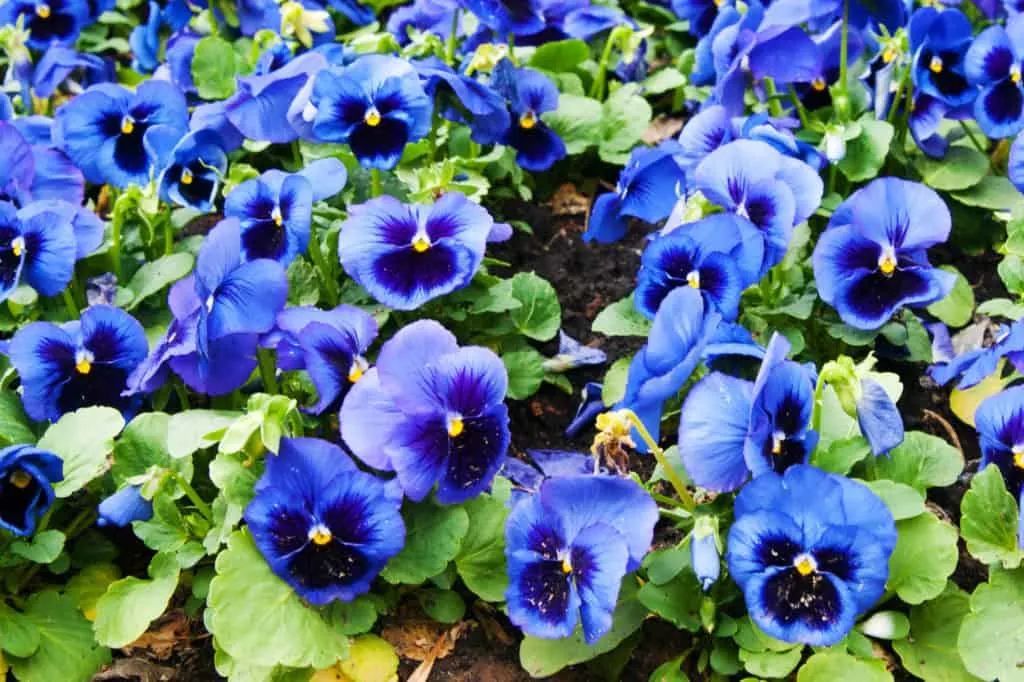
The spectrum of blue is wide. With this plant list the focus is to stay within true blue shades, with the attempt to limit the cross over into purple. It is a fine line and different plant varieties and even soil conditions can affect the overall “blueness” of flower color.
An old wives’ tale is to put copper pennies around blue spruce trees to bring out the “blueness” of their needles. It may be worth attempting to increase the amount of copper in the soil to increase the amount of “blueness” of the blue perennial flowers.
9 Best Blue Perennials
1. Larkspur (Delphinium)
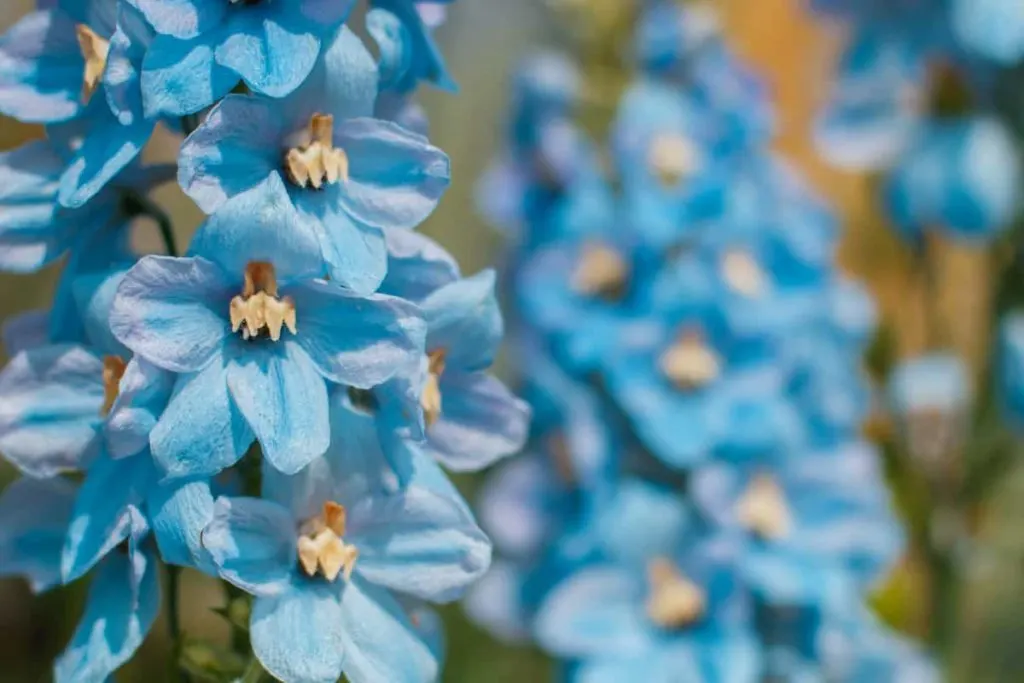
Stand Out Feature: Giant colorful long-blooming spires which make wonderful cut flowers.
Description: Large flowering spikes arise above interesting, maple-like, palmate leaves.
Form: Clump forming.
Bloom Time: Early to midsummer. Some varieties can be cut back for an early fall bloom.
Hardiness: Zone 3 to 7.
Height and Spread: Depending on climate and variety, 4 to 10 feet tall with a 3 to 5 foot spread.
Care: Plant in well-drained soil in full sun to partial shade. Most varieties benefit greatly from staking.
2. Hyacinth (Hyacinthus)
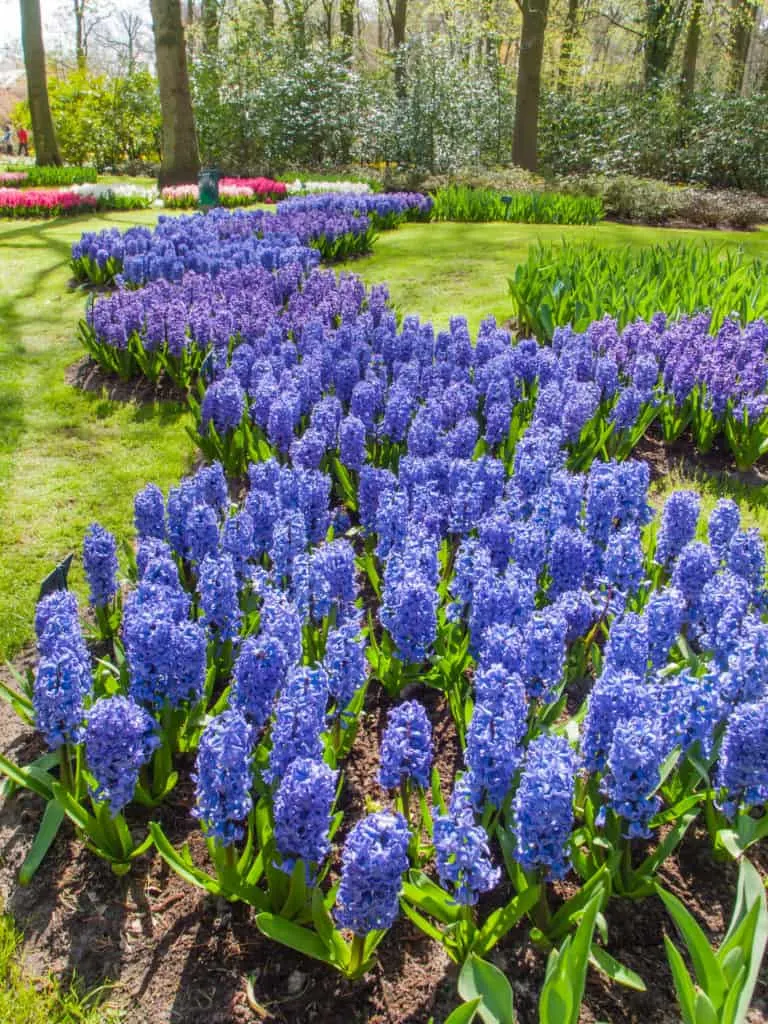
Stand Out Feature: Enchanting fragrance.
Description: An early blooming spring bulb with large flowers which bloom in lush whorls.
Form: Flower stems form above fleshy, spike-like leaves.
Bloom Time: Early spring, blooming at the same time as daffodils.
Hardiness: Zones 4 to 8.
Height and Spread: 8 to 10 inches tall.
Care: Plant bulbs in fall, before first frost. In spring, remove finished flowers, leaving the leaves to feed the bulbs for next year’s blooms.
3. Iris (Iris germanica)
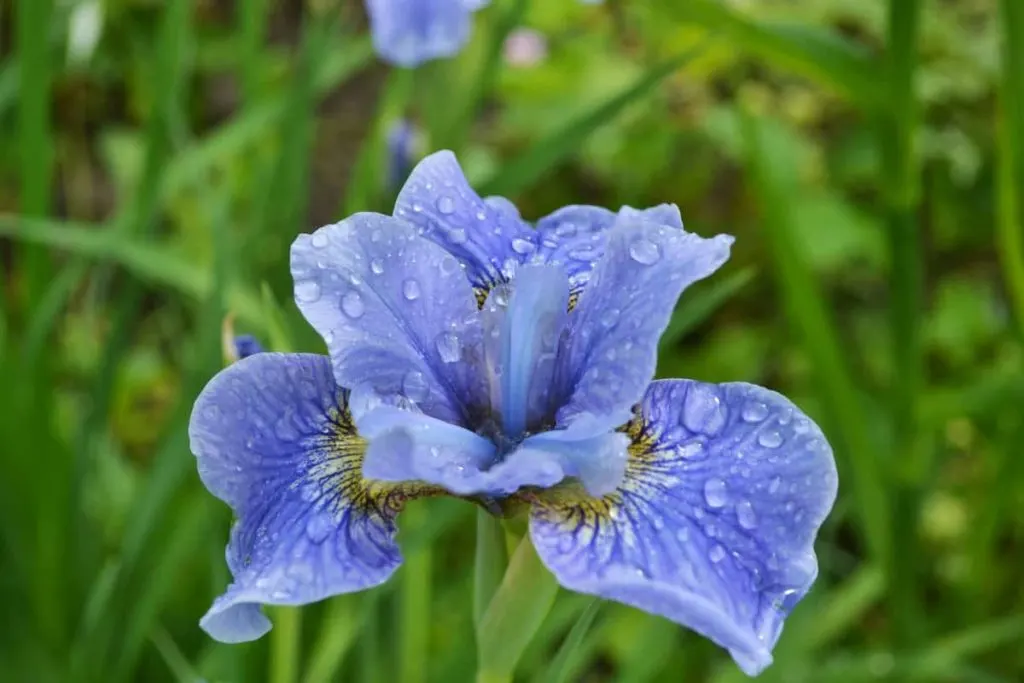
Stand Out Feature: Long-blooming stately flowers with prominent “beard”.
Description: A rhizomatous tough perennial with multiple single-flowered stems which hold large, unique “bearded” flowers.
Form: Spikey, grass-like leaves are clump forming, above which rise the flowering stems.
Bloom Time: Depending on variety, bloom times can range from early spring through midsummer.
Hardiness: Zones 3 to 10.
Height and Spread: Grow 1 to 2 feet tall and wide. There are dwarf varieties with comparatively giant blooms on dainty 4-inch stems.
Care: A tough, low-maintenance perennial, irises need to have their rhizome exposed to bloom. If the plant is mulched for winter protection, be sure to remove the mulch in the spring to expose the top of the rhizomes.
4. Clematis (Clematis occidentalis)
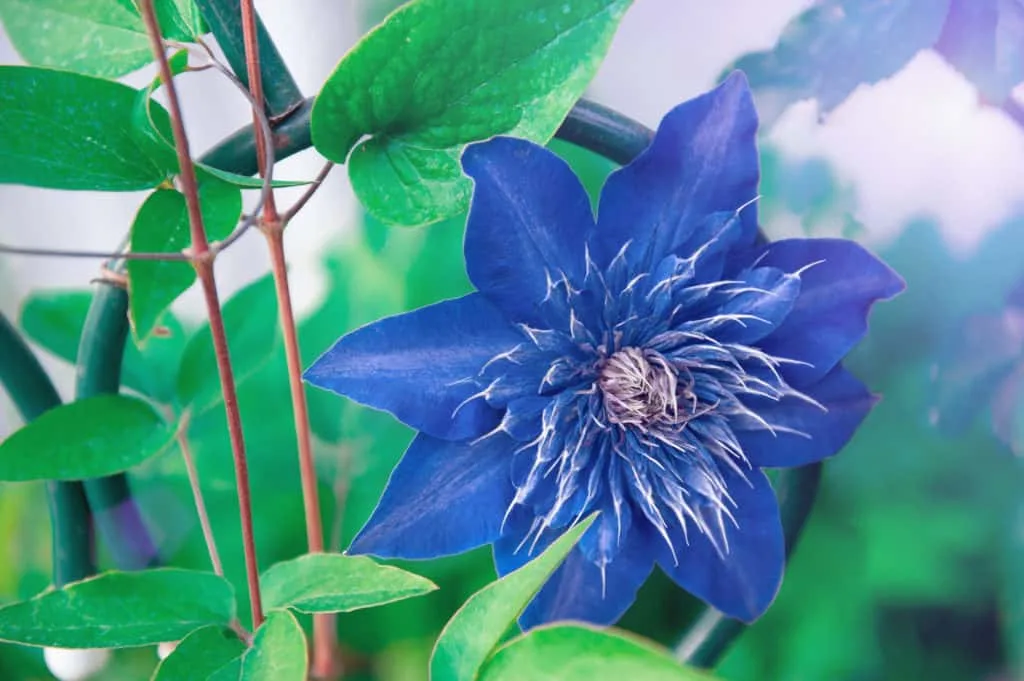
Stand Out Feature: Prolific bloomer with ingenious climbing habit.
Description: Climbing vines with large 5 to 6 petaled flowers.
Form: Climbing vines.
Bloom Time: Three main types of clematis include spring blooming, everblooming, and late summer blooming types. Like raspberries, this is determined by whether the plant blooms on old or new wood, or both.
Hardiness: Zones 4 to 9.
Height and Spread: The sky is the limit. I have seen wild blue clematis blooming at the top of Douglas fir trees, so over 45 feet tall.
Care: Clematis will tolerate shade but perform best in full sun in well drained, slightly alkaline soil. They love cool roots, so use a couple inches of mulch and/or place flat stones at the base of plants to help keep roots cool.
5. Wild Blue Phlox (Phlox divaricata)
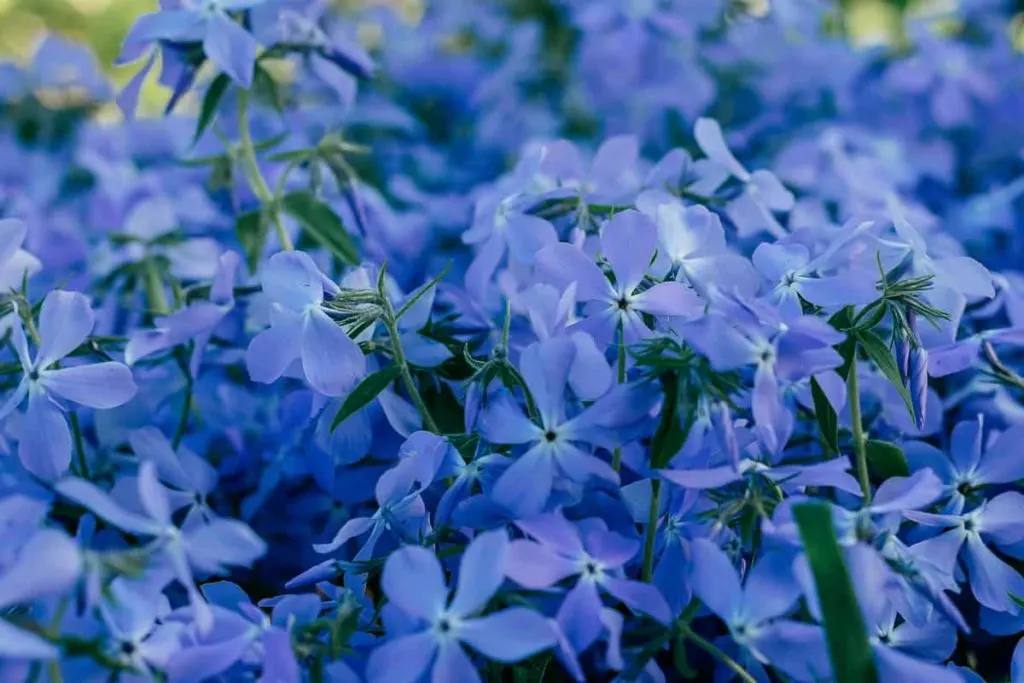
Stand Out Feature: Fragrant long-lasting blooms.
Description: Five-petaled, showy flowers bloom on mass on the native wildflower groundcover.
Form: Wild blue phlox has a mounding habit ideal for naturalized gardens.
Bloom Time: Spring.
Hardiness: Zones 3 to 8.
Height and Spread: 8 to 12 inches tall and wide.
Care: Low maintenance in shade to part-shade. Also look for blue varieties of Garden Phlox and Moss Phlox for outstanding fragrant blue blooms.
6. Colorado Blue Columbine (Aquilegia coerulea)
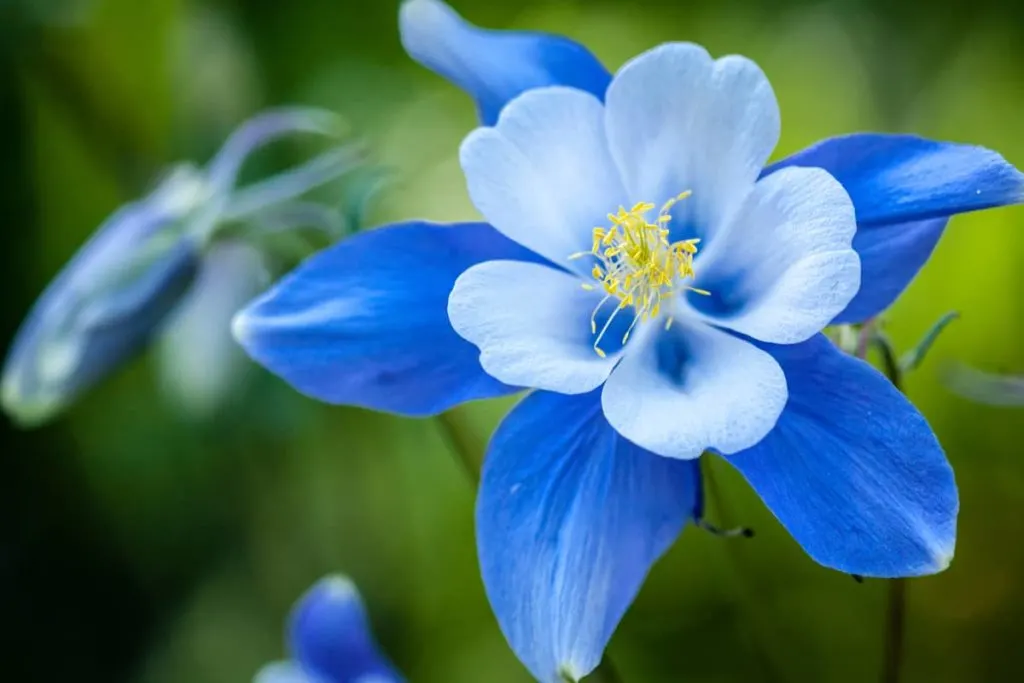
Stand Out Feature: One of a kind, distinctive spur-like flowers.
Description: Popular wildflower with multiple single-stemmed blue and white flowers daintily parade above light green, deeply cut leaves.
Form: Upright, short-lived perennial that may reseed itself in optimal conditions.
Bloom Time: Late spring and throughout summer.
Hardiness: Zones 3 to 7.
Height and Spread: Up to 2 feet wide and tall.
Care: Moist, naturalized areas. May freely reseed itself.
7. Pansy (Viola tricolor var. hortensis)
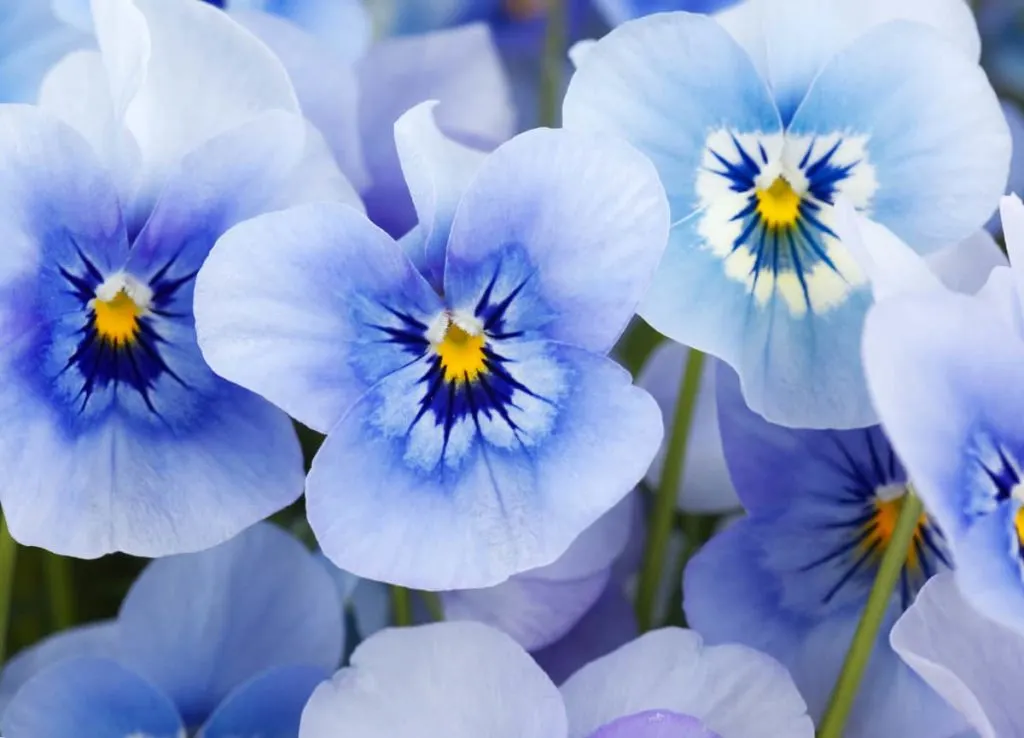
Stand Out Feature: Adorable, colorful, delicate, edible flowers.
Description: Technically, a short lived perennial or an annual, these colorful little plants can reseed themselves and provide blue coverage in an area for many years, so they are deemed worthy of this list. They also can help fill in around larger, later blooming blue perennials.
Form: Small oval leaves barely noticeable under large, floppy flowers.
Bloom Time: Spring and summer in cool climates, but late summer and fall in hot places.
Hardiness: Plants are hardy in zone 6 but plants can reseed in much colder climates.
Height and Spread: Plants grow 6 to 9 inches tall and can spread 9 to 12 inches wide.
Care: Pansies grow best in soil temperatures between 45° and 65° F. They perform and prefer cooler climates.
8. Lupine (Lupinus)
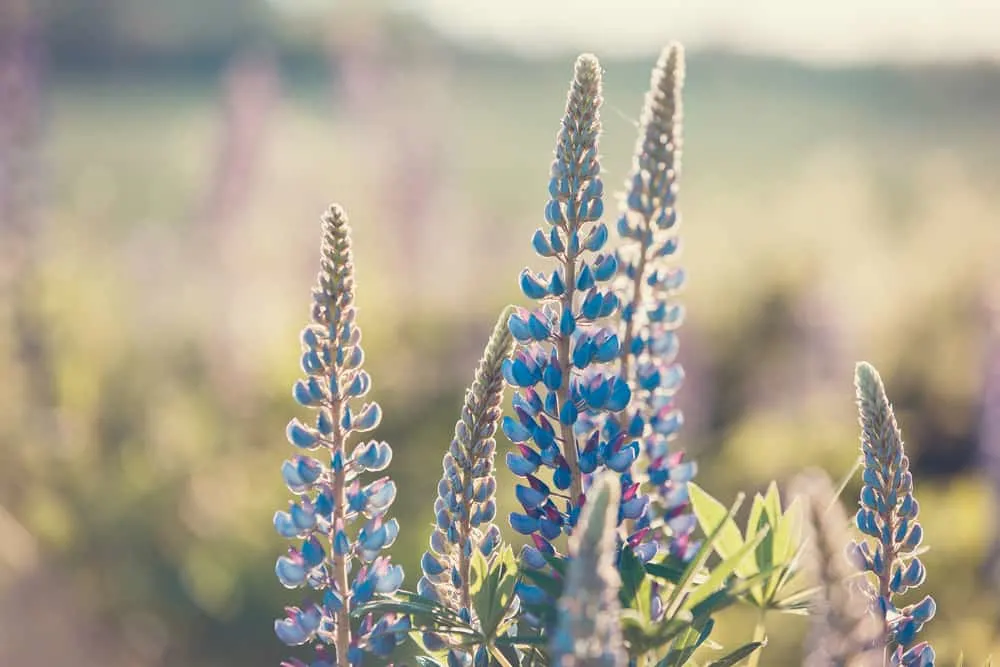
Stand Out Feature: Excellent for naturalizing large areas or creating a wonderful backdrop in the backyard.
Description: A gorgeous wildflower with luscious, tall spikes of giant pea-like flowers which rise above interesting palmate compound leaves.
Form: Clump-forming biennial or short-lived perennial which readily self-seeds, forming colonies.
Bloom Time: In spring through early summer.
Hardiness: Zones 4 to 9.
Height and Spread: Lupines grow 1 to 4 feet tall with individual plants being 1 to 3 feet wide. In excellent conditions, their free-seeding habit makes their spread infinite.
Care: A cool season wildflower, plant in cool, moist areas in full sun to partial shade in well-drained, slightly acidic soil. They will bloom better in full sun.
9. Himalayan Blue Poppy (Meconopsis betonicifolia)
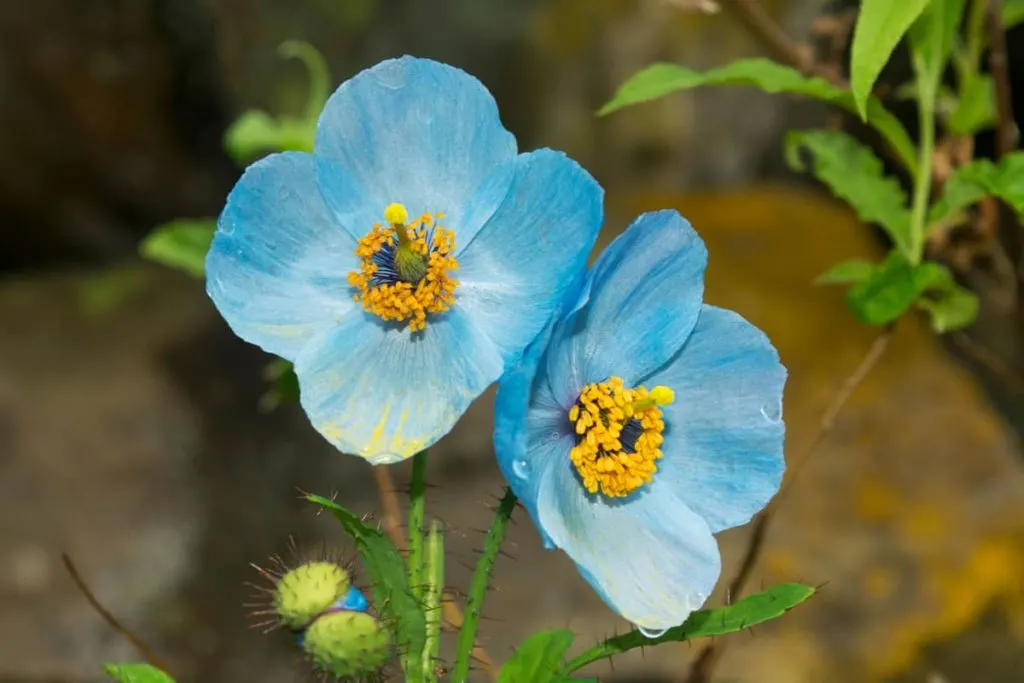
Stand Out Feature: Want to show off your gardening talent? Try this notoriously hard-to-grow perennial.
Description: A real showstopper in the garden with the truest of blue flowers that are up to 4 inches wide. The flowers bloom in succession on upright stems above a basal rosette of oblong leaves.
Form: Clump forming.
Bloom Time: Late spring to early summer.
Hardiness: Zones 1 to 8.
Height and Spread: Grows 3 to 4 feet tall and 1 to 2 feet wide.
Care: Plant in moist, well-drained clay/loam that is neutral to slightly acidic. Protect from heat and wind and provide part shade. Native to Tibet so aspiring to mimic this plant’s native habitat may result in plants that self-seed and create an inspirational colony, making other gardeners green with envy.
This list of gorgeous blue perennials is a great place to start when creating an overall peaceful, relaxing feel to the backyard while also showing off your amazing gardening powers.
